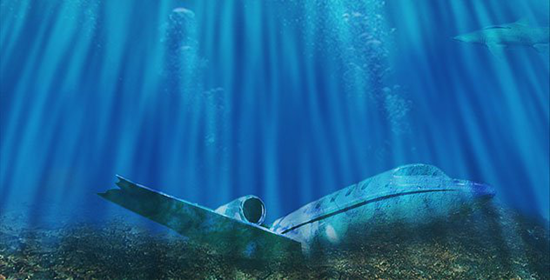
The 10 Most Mysterious Aircraft Disappearances in History
By Debra Kelly, Urban Ghosts Media, 10 November 2014.
By Debra Kelly, Urban Ghosts Media, 10 November 2014.
Everyone’s familiar with the most infamous of all aircraft disappearances - the plane of Amelia Earhart. Tragically, with all our more modern technology, the disappearance of an entire aircraft isn’t unheard of now, as painfully illustrated by the disappearance of Malaysia Airlines Flight 370. There are many more aircraft whose disappearance is surrounded by tragedy and mystery, though, and some date back to the earliest days of flight.
10. The America, Atlantic Ocean
Financed by organizations like The Daily Telegraph and The New York Times, the America was the airship that made the world’s first attempt at crossing the Atlantic Ocean. Little more than a cotton and silk balloon, the airship had a crew of seven - six humans and a cat named Kiddo, who was brought along for good luck.
Originally delayed by weather, the American left Atlantic City on October 15 and was surrounded by not only naysayers, but the determination of her crew to prove them all wrong. The journey was plagued with problems from the start, not the least of which was the cat. Kiddo was less than thrilled to be included in the mission, and made it a point of being as vocal as he could about it. Attempts to lower him off the ship and onto another craft failed, so it was quickly clear he was along for the entire ride. He settled in quickly, though, but their problems weren’t over.
There were also airship-related problems, including difficulty in maintaining a consistent height, with the ship wavering at times between 200 and 3,600 feet. Winds proved more than a challenge, and to make matters even worse, a hurricane was brewing to the south. Originally heading in the right direction, the airship was eventually blown back to the west by insurmountable winds; after 72 hours they radioed the Royal Mail Ship the Trent and requested assistance. The America’s entire crew - including Kiddo - made it into the lifeboat when they were picked up by the Trent.
The mail ship took them on to New York, where they were treated to a hero’s welcome in spite of their failure. They could count a number of firsts as their success, though, including sending the first radio message from an airship to the shore and to a ship. The America itself was never seen again, though, and the last glimpses of it were of the airship rising and heading out farther over the ocean. Kiddo retired to a non-airborne life living with the daughter of one of the crew members.
9. Lockheed L-1049, Pacific Ocean
In March of 1962, a Lockheed L-1094 Super Constellation was chartered by the US Government to take 93 Army Rangers to Vietnam. The plane was on its way to Guam in the Philippines leg of the trip when it disappeared less than an hour and a half from leaving Guam and its refuelling stop.
There were no storms reported in the area, and during his last check-in, the pilot reported no problems and that the plane was both on course and on time for its arrival in the Philippines - from there, it was due to head to South Vietnam. Tragically, the plane’s disappearance came on the heels of two other major airline disasters - an American Airlines jet crash killed 95 people and a British airliner crash killed 111.
An eight-day search was conducted for the missing airliner, at first covering about 75,000 square miles of the Pacific Ocean. During the search, absolutely no trace of the plane was ever found, and there was no trace of what might have happened, either. There were no weather anomalies or sudden storms that might have caused the plane problems, and by the time the search was called off, rescue teams had covered more than 200,000 square miles of territory. The plane was carrying 11 civilian crew, 93 American soldiers and 3 Vietnamese soldiers.
8. Glenn Miller’s Norseman C-64
Glenn Miller was one of the premiere big band performers of the 1940s. If you remember your grandparents listening to any kind of big band music, it was probably him. He was more than just a performer, though, he was a patriotic American. Miller already had a staggeringly successful career when he decided to enlist in the Army in 1941, determined to do his duty for his country even though he was unlikely to have been regularly drafted into service because of his age.
Once he had enlisted in the Army Air Corps, he was promoted to Captain and later to Major. For part of his service, Miller organized an orchestra and would perform for the troops as well as serve alongside them. It was en route to one of these performances that he and his plane disappeared.
Miller was heading from England to France; he left as a passenger on a Norseman C-64 plane and was never heard from again.
There’s been a number of theories about just what happened to Miller’s plane, but nothing has ever been proven. According to one recent theory, poor visibility forced the pilot to fly low across the English Channel; engines froze, and it was only a matter of seconds before the plane hit the water. Other theories suggest that the plane was hit by friendly fire that happened when bombers couldn’t complete a run and needed to jettison their bombs over water before landing…and Miller’s plane was in the way.
There’s also been a wide range of pretty bizarre theories around his disappearance, too, and some suggest that he not only made it to France but died from wartime injuries in a field hospital much later, while others claim he made it to France and died later in a bordello. Other theories have him working as an Allied spy that was ultimately targeted by a German assassin, while still another theory says that Miller - and his plane - were taken away by aliens. While that’s pretty unlikely, 70 years of searching military history hasn’t led to any more concrete information about what happened to Miller or his plane.
7. Frederick Valentich
Frederick Valentich was a 20-year-old member of the Air Training Corps; he’d had his pilot’s license for about a year when he disappeared over the water between Australia and Tasmania. He would disappear in a rented single-engine Cessna, picked up from the Moorabbin Airport in Melbourne and hired for only a quick, three and a half hour flight.
In October of 1978, he rented the plane to make his trip - his first attempt got cancelled due to bad weather, and when he finally got underway on his next attempt, things started to go a little sideways just after sunset. Radio communications with Valentich are troubling regardless of what you believe.
The young pilot reported seeing another craft in the distance, four lights that seemed to be standing still. As communication goes on, he said the aircraft passed over him, and eventually began hovering above him. He described it as metallic-looking, with green lights, which believers in alien intelligence and UFOs say is very, very clearly an encounter with an extraterrestrial. Valentich reported engine trouble shortly after, and then disappeared.
There’s a handful of things that are weird about his disappearance, aside from his report of the strange craft. He originally gave two different reasons for his trip out to King Island, saying first that he was picking up some passengers, and then that he was picking up some crayfish - neither of which were on the island waiting for him. Because the landing strip he was heading to was unmanned most of the time, he would have had to call ahead to make sure someone was there to guide him in - which he never did.
Image: via Wikipedia
But Valentich was also something of a UFO buff, and it’s been suggested that clearly, he was simply having a bit of fun with the air traffic controllers that were on the other end of the line for a good part of the radio communication. Fun turned deadly, though, when - during what was his first night flight - he became extremely disoriented and began to bank back and forth in an attempt to recover. It’s thought that in the process, he ended up crashing in the water - not unheard of, and a tragic accidental end. His last transmission, though, has given people plenty of opportunity to suggest that he was actually abducted by aliens - supporters of this theory include his father.
6. Damer Leslie Allen
In 1910, two men competed to see who was going to be the first to fly across the Irish Sea. Denys Corbett Wilson and Damer Leslie Allen were both relative newcomers to the aviation world, friends that had bonded over their love of this new frontier. Both were flying identical single-seater Bleriot XI planes that had only a compass to help them navigate.
The previous attempt at making the flight from Holyhead to the Irish coast ended when Robert Loraine was forced to make an emergency landing within sight of the coast - he managed to swim to shore, but it would ultimately be Wilson that would complete the first Wales-to-Ireland crossing.
Unfortunately, Allen was not as lucky.
Image: via aviapc.com
Both men started their journey at the same time, and Allen even had an early lead. He never reached Dublin, though, as he and his plane disappeared somewhere over the Irish Sea. Nothing was ever recovered from the presumed crash, and it’s unsure what happened. Wilson’s plane - identical to Allen’s - was plagued with engine trouble that had forced him to land several times before heading out over the Irish sea and at one point, he was forced to refuel with gas siphoned from nearby agricultural machines and oil purchased from a local chemist. It’s presumed that the same difficulties plagued Allen, but it seems unlikely anyone will ever know for sure.
5. Light Heart (Balloon)
Another of the non-traditional aircraft on this list, the Light Heart was Thomas Leigh Gatch, Jr‘s claim to fame. Gatch was attempting to be the first to cross the Atlantic Ocean in a balloon when he and his craft disappeared somewhere over the Canary Islands in 1974.
Not your traditional balloon, the Light Heart was a US$60,000 labour of love that consisted of 10 super-pressure helium balloons that had been specially designed to travel in the jet stream across the Atlantic. Gatch’s original plan was to ascend to 40,000 feet, enter the jet stream, and coast his way to Europe.
Although one of the balloons burst not long after his take-off on February 18, 1974, he had designed the craft to be able to still function with the loss of two balloons, and he continued with the remaining nine. Gatch himself, sealed in an insulated gondola suspended below the balloons, maintained radio contact with airlines that he was sharing air space with.
The journey was supposed to take somewhere around 52 hours from departure at Harrisburg Airport in Pennsylvania to Europe. The last radio contact anyone had with Gatch was on the afternoon of February 19, when he was determined to be about 925 miles northeast of San Juan. The Light Heart was seen several days later by a Liberian freighter, and it was already flying much, much lower than expected and was even farther off-course. This was the last sighting of the balloon, and although there was a massive search undertaken by US military ships and planes as well as civilian craft that were in the area, no other trace of the Light Heart or its pilot was ever seen again.
4. L-8 Blimp Disappearance
This one’s a bit unique in that the aircraft came back, but the crew didn’t.
The U.S. Navy’s L-8 aircraft was once a Goodyear advertising blimp, before it was drafted into military service during World War Two. Part of its job was reconnaissance, patrolling the west coast of the United States and looking for Japanese submarines. On August 16, 1942, the blimp left Treasure Island with a crew of 2 - the 27-year-old Lt. Ernest Cody and 38-year-old Ensign Charles Adams. Both had years of experience - Cody was already well-known as an experienced pilot of the blimp, and Adams was one of the men who had searched the crash of the Hindenburg for survivors. The flight was to be a routine one.
They left on the blimp, but when it landed, there was no trace of either one of the men.
Bizarrely, there was also no sign that anything had even gone wrong. Parachutes were still in their places, life jackets hadn’t been touched, tools were all still stowed. Both the airship’s engines were still on and in working order, the only damage to the craft had been incurred when it hit the cliffs on its way down in its unmanned landing. Radio and communication equipment was all working, and the briefcase filled with military documents - that Cody was in control of, and had orders to pitch overboard in case of emergency - was still there.
There were several smoke bombs (used to mark locations where enemy submarines were spotted), and, most bizarre, the craft’s side door was open. As a safety measure, the door was designed to only be able to be opened from the outside, to prevent accidental opening during flight. Whether it was open when the craft came down or if those who were first to the scene opened it, no one seems sure.
There’s a number of theories as to what happened to the crew - that there had been a stowaway or a fight between the two men, that one - or both - of the men had fallen out trying to get a better look at something…none of the theories have ever been proven, though, leaving the empty L-8 blimp’s reappearance a mysterious one.
3. Flight 19, Bermuda Triangle
Flight 19 is one of the most legendary of all aircraft disappearances, and one that gave credence to the mythology of the Bermuda Triangle.
While none of the five missing planes have ever been found, it’s pretty well accepted that we know what happened to them, if not where they ended up. On December 5, 1945, five TBM Avenger Torpedo Bombers headed out from the US Naval Air Station in Fort Lauderdale, Florida on a training mission. Orders included executing a series of manoeuvres, then carrying out a practice bombing run on Hen and Chickens Shoals, then returning to the base.
Among the pilots was a senior qualified flight instructor, with other pilots all having logged time in that type of aircraft. Weather was average, with no more than scattered showers and mild winds - nothing that would have caused catastrophic problems.
By 4 p.m., a radio message between pilots was intercepted; it indicated the flight instructor was unsure of where they were, and which direction the coast was in. It was assumed that they had made their way farther to the southeast than they should have been, but no cause for the misdirection was ever indicated in any other transmissions.
The aircraft, which only had enough fuel to last them until 8 p.m., would have been forced down over the ocean. While there were no records of storms in the area, no traces of the flight were ever found, even though there were other aircraft and ships sent to search for the missing group. One of the rescue planes - a patrol plane that left Fort Lauderdale at 7:30 p.m. on December 5 - also went missing. Not long after take-off, the plane was sighted by a merchant ship, along with what was described as a “burst of flame.” In spite of efforts from the Army, Navy and Coast Guard, no trace of either Flight 19 or of the missing rescue craft was ever found.
2. Felix Moncla and Robert Wilson (F-89 Scorpion)
In 1953, Felix Moncla (above) and Robert Wilson left Kinross Air Force Base to investigate a mysterious blip on the radar over Lake Superior. The weather was clear, with negligible winds and only the lightest of snow flurries - certainly nothing that would have caused significant problems for the experienced pilot.
The last radar contact with Moncla’s F-89 was about 150 miles northwest of the base, over the water. According to radar, he appeared to collide or merge with the radar blip in question, but no trace of his plane was ever found, and it was never determined what the other blip had been, either.
Not surprisingly, the incident has been described as an alien UFO encounter in which Moncla, tailing an alien craft, was absorbed by it.
That’s the unofficial version of the story, while the official one is no less strange, but definitely more earthly. One theory suggests that the radar blip was a Royal Canadian Air Force plane, and once Moncla had identified it, he broke off pursuit and somehow ended up crashing in the lake, most likely - says the Air Force - after suffering from an attack of vertigo and losing his bearings. His plane is recorded as making a steep descent from 30,000 feet to 7,000 feet, presumably to see what the radar blip was, but there is still the possibility that it was a faulty radar reading that was responsible for the alert in the first place. The RCAF denies that one of their craft was involved, though, making it unclear just what Moncla was chasing.
Eerily, some sources have claimed to have heard Moncla speaking on the radio for some time after his plane disappeared from the radar.
1. Avro Lancastrian ‘Star Dust’
Image: Aeroplane Monthly via Ian Dunster
While the wreckage of the Stardust has technically been found, there’s still enough questions surrounding this crash and 53-year disappearance that we’re going to include it on the list.
On August 2, 1947, the British Avro Lancastrian airliner known as ‘Star Dust’ left Buenos Aires for Santiago, with 6 passengers and 5 crew on board. Minutes before it was due to land, it simply vanished - but not before sending a final, mysterious transmission: STENDEC. Until then, there was absolutely no sign that there was anything out of the ordinary.
There was a massive search of the Andes in the region of the aircraft’s sudden disappearance, but no trace of the plane was found - until 53 years later.
In 2000, the plane’s wreckage was found more than 30 miles from where the plane was last known to be, high up on the Tupangato peak where it had – bizarrely - gone unnoticed by mountaineers for more than five decades. Later examination of the plane’s wreckage led to the explanation that it had ultimately been covered by freezing snowfall after the crash, burying it deeper and deeper in the glacier; it was only revealed again when it had travelled along with the moving mountain into warmer climates that would have melted the ice that had concealed it for so long.
Ultimately, it was determined that the plane’s attempts to fly too high meant that it had entered the jet-stream, slowed down enough that when it attempted to descend, it was still on the wrong side of the mountains. The pilots couldn’t compensate quickly enough, at first unable to even see the mountains through the cloud cover.
But what’s still not known is what the flight’s last communication means. All other radio communication had been normal, save for STENDEC; it’s been suggested that it was an attempt to say DESCENT, or Stardust. It’s also been suggested that each letter stood for something else, acting as initials…but nothing has ever been concretely proven, and most likely never will be.
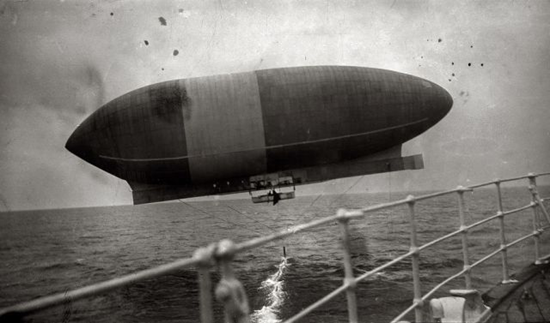

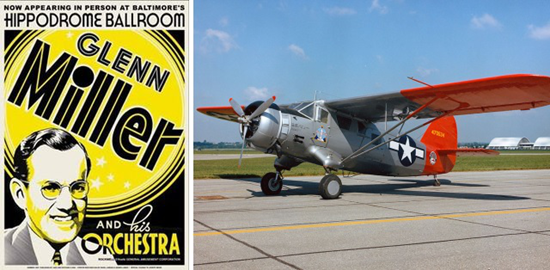


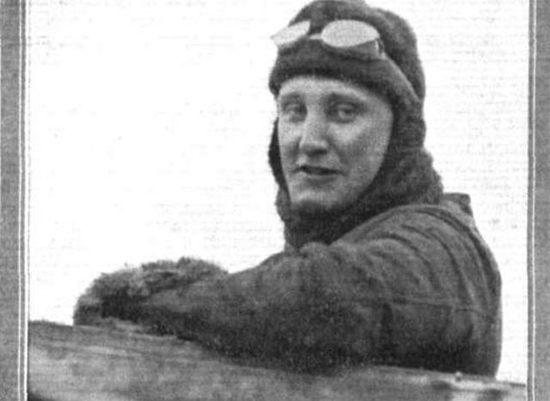



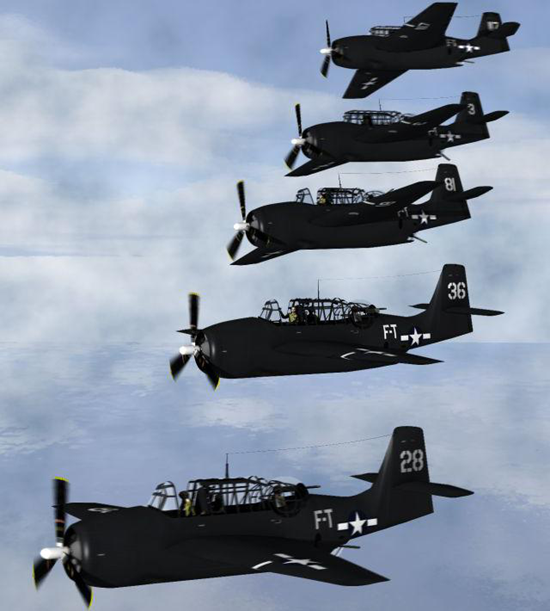
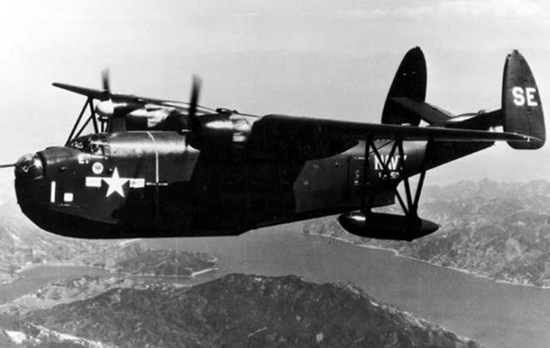
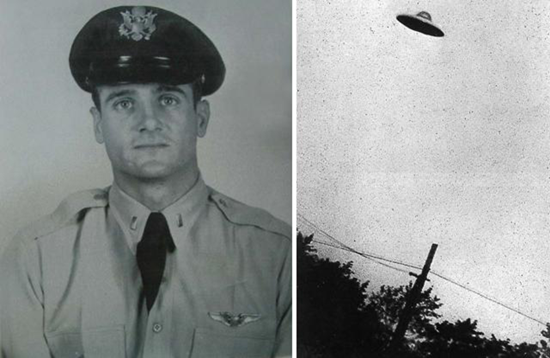

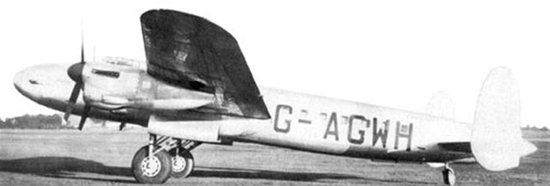
No comments:
Post a Comment
Please adhere to proper blog etiquette when posting your comments. This blog owner will exercise his absolution discretion in allowing or rejecting any comments that are deemed seditious, defamatory, libelous, racist, vulgar, insulting, and other remarks that exhibit similar characteristics. If you insist on using anonymous comments, please write your name or other IDs at the end of your message.